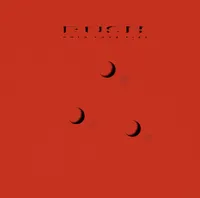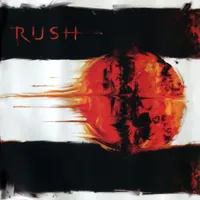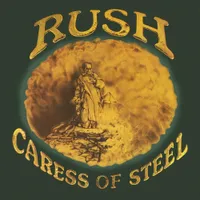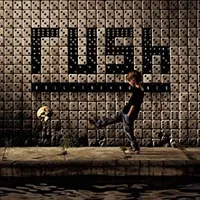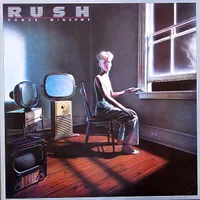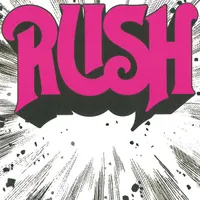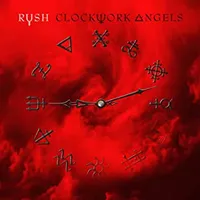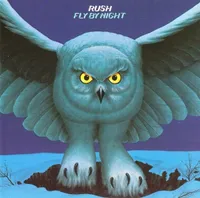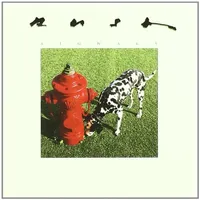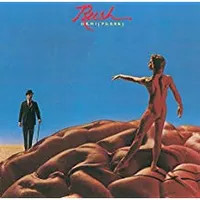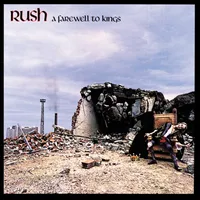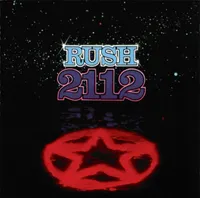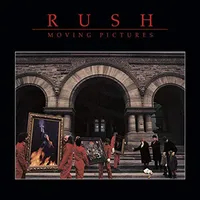Every Rush album ranked from worst to best
Canada's prog rock heroes have amassed an immense discography over a 50-year career... and now they're hitting the road again

When Rush emerged with their self-titled debut album in 1974, many looked upon them as nothing more than Led Zeppelin clones. Indeed, when music director and DJ Donna Halper and her team dropped the needle on Working Man on Cleveland radio station WMMS, the station’s switchboard was inundated with calls asking if this was a new track by Plant, Page, Jones and Bonham.
Now, more than 50 years later and after 19 studio albums, 11 live records, a growing number of lovingly assembled box sets and an acclaimed career which saw the band inducted into the Rock And Roll Hall Of Fame in 2013, it’s harder to judge which is more unlikely: (a) that they lasted so long, (b) that they did so on the strength of hiring drummer/lyricist Neil Peart to replace John Rutsey in 1964, or (c) that they decided to return to the road in 2026 with a third drummer, Anika Nilles, who wasn't even born when 1982's Signals came out.
Rush’s half-century run is a riddle wrapped in a mystery, inside the enigma that was the famously fan/limelight-avoiding and sadly departed Peart. Yet Rush were a three-piece band of equal parts, and similar attention is long overdue for vocalist and bassist Geddy Lee and guitarist Alex Lifeson. Their qualities added to Peart’s prodigious talents for rhythms usually found outside the rock sphere inspired a collective ambition to improve and expand their abilities, and to make music that is always evolving, never safe.
For those of us who grew up with Rush, their later albums are friends we’ve chosen, but the older ones are like family members. Some are harder to love, but we remain loyal to all. With that in mind, here is every Rush studio album ranked from 'worst' to best.

19. Hold Your Fire (Mercury, 1987)
History hasn’t been kind to Hold Your Fire album. Its slick production muscled out the quirkiness that edged Signals and Grace Under Pressure, while Neil Peart’s faux-oriental Tai Shan is loathed to this day by Geddy Lee and Alex Lifeson..
18. Vapor Trails (Atlantic, 2002)
Vapor Trails was the most important album Rush had made since 2112, mainly because they never expected to make it in the first place. It marked Neil Peart’s return from a wilderness of grief after the death of his wife and daughter – and it’s no coincidence that the album opens with the sound of his drums.
17. Test For Echo (Atlantic, 1996)
A minor disappointment after Counterparts, Rush’s 16th studio album was sturdy rather than sparkling. “It doesn’t really have a defined direction,” admitted Geddy Lee in 2002. “I kind of felt like we were a bit burnt creatively.”
16. Presto (Atlantic, 1989)
Presto is held up as the point where Rush moved on from their “keyboard phase”, even if still sounds like an utterly 1980s proposition. Produced by Rupert Hine, it boasts echoing drum sonics and a glistening sheen, while the rhythms of Scars could almost be ABC or Frankie Goes To Hollywood.
15. Counterparts (Atlantic, 1993)
Presto and Roll The Bones had been touted as back-to-basics album, but Counterparts was the point where Rush truly reconnected with the rock band they once were.
14. Caress Of Steel (Mercury, 1975)
The difficult third album. Caress Of Steel was the first truly ‘prog’ Rush album, as showcased on the 12-minute The Necromancer and the side-long The Fountain Of Lamneth. But it wasn’t all tricky time changes and Tolkein-esque storylines – Bastille Day packed a hard rock punch and reflective Lakeside Park wallowed in delicate nostalgia (the less said about I Think I’m Going Bald, the better).
13. Snakes And Arrows (Atlantic, 2007)
Meet the new Rush, as good as the old Rush. The band cited co-producer Nick Raskulinecz for making the recording process more enjoyable than any in memory – and it shows. The synths disappeared (just a Mellotron, used sparsely), and Far Cry, Working Them Angels and Spindrift rock like you’ve wished Rush would for years.
12. Roll The Bones (Atlantic, 1991)
Rush had new label for 1989’s Presto, and they also switched to Howard Jones and Tina Turner producer Rupert Hine. That unlikely combination worked best on this second collaboration, as if to prove the theory that Rush are at their best in the studio when the album title ends in an ‘S’.
11. Power Windows (Vertigo, 1985)
Older fans may dismiss Rush’s 80s albums because they lack the drama of their 70s predecessors, but the playing is unquestionably tighter and the arrangements more concise. Grace Under Pressure (1984) was very good, but undermined because Lifeson also played synthesisers; Power Windows is purer because he sticks to what he does best.
10. Rush (Moon, 1974)
“This was us trying to find a sound,” said Geddy Lee of Rush’s self-titled debut. “Thinking we wanted to be a hard rock band and emulating those bands we thought were cool.”
9. Clockwork Angels (Roadrunner Records, 2012)
When Clockwork Angels was released in 2012, few suspected it would turn out to be the band's final album. But what an album to close out a quite remarkable career. The concept album was laced with some stone-cold classics, including the one-two punch of Caravan and BU2B, while the soaring title track ebbs and flows through its 7 minutes and 30 second run time.
8. Grace Under Pressure (Mercury, 1984)
Signals split the fan vote, with many hating its brave new world of synthesised sounds and dialled-down guitars. Admirably, Rush refused to retreat to safe ground with the follow up, recruiting pop producer Peter Henderson to take the place of Terry Brown.
7. Fly By Night (Mercury, 1975)
Exit John Rutsey and blues rock knock-offs, enter Neil Peart and a fresh and defiantly forward-looking sound. While Best I Can and the breezy Making Memories still bore the imprint of Led Zeppelin et al, it was mixed up with a new progressive rock mentality – something evident on eight-minute fan favourite By-Tor And The Snow Dog, a song that drew up the template for the epic blow-outs that followed.
6. Signals (Mercury, 1982)
Following the live Exit… Stage Left, Dirk, Lerxst and Pratt (aka Lee, Lifeson and Peart) simply picked up from Moving Pictures and added more keyboards. Lots more. Subdivisions and The Analog Kid are awash with them, but never drowned.
5. Hemispheres (Mercury, 1978)
On Hemispheres Peart, painted into a corner by his promise to continue the storyline of Cygnus X-1, devised the 18-minute title track based on classical philosophy and the intellectual battle between the heart and mind, romance and intellect, reason and emotion. Proper bonkers, but we loved it.
4. Permanent Waves (Mercury, 1980)
The kid brother to Moving Pictures, and where Lee first properly explored vocal ranges that didn’t scare dogs. Due to its unexpected hit single The Spirit Of Radio, this is perhaps the one Rush album bought by non-fans – many of them doubtless attracted by the Police-like reggae break in that track. For the rest of us, Free Will and the brooding Jacob’s Ladder reminded us of the old Rush of Ayn Rand and sci-fi. Then a pair of beautiful love songs – Entre Nous and Different Strings – hinted at a more romantic future. But rather than getting soppy, the album closes with a three-parter, Natural Science, that is both big and clever.
3. A Farewell To Kings (Mercury, 1977)
Ground zero for the band that Rush became. Power-trio stylings were eclipsed as Peart added a plethora of bells and percussion to his drum kit, Lee and Lifeson used pedal synths and the singer also took charge of a Minimoog.
2. 2112 (Mercury, 1976)
Rush did epics before 2112 (successfully with the nine-minute By-Tor And The Snow Dog on their second album Fly By Night, and with The Fountain Of Lamneth on follow-up Caress Of Steel), but with 2112’s title track they hit pay dirt. It’s almost 21 minutes of brilliance which runs the full musical gamut, from acoustic picking (as the hero discovers the ‘ancient miracle’ of a six-string) to electric metal fury (the priests of the Temples Of Syrinx smash it, driving him to suicide as an apocalyptic battle rages).
1. Moving Pictures (Mercury, 1981)
The benchmark album for Rush – and it sounds as fresh today as when, after five months of often fraught work, the band sat in a playback at Quebec’s Le Studios and declared it was finished.
Sign up below to get the latest from Classic Rock, plus exclusive special offers, direct to your inbox!
Freelance contributor to Classic Rock and several of its offshoots since 2006. In the 1980s he began a 15-year spell working for Kerrang! intially as a cub reviewer and later as Geoff Barton’s deputy and then pouring precious metal into test tubes as editor of its Special Projects division. Has spent quality time with Robert Plant, Keith Richards, Ritchie Blackmore, Rory Gallagher and Gary Moore – and also spent time in a maximum security prison alongside Love/Hate. Loves Rush, Aerosmith and beer. Will work for food.
